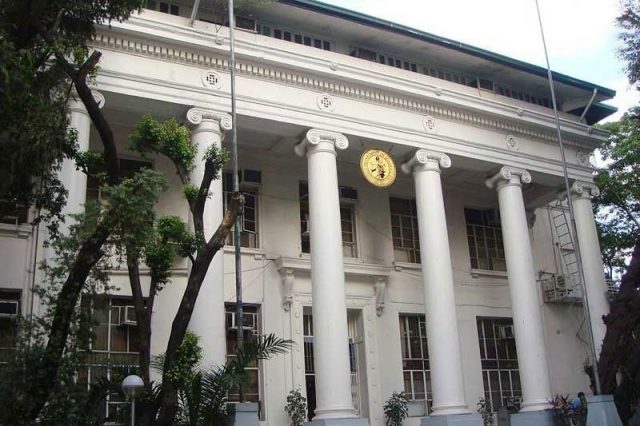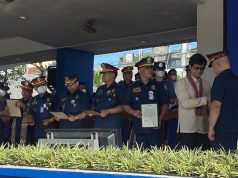
Forensic pathologist Raquel Fortun and anthropologists will meet with Justice Secretary Jesus Crispin “Boying” Remulla on Friday to examine the skeletal remains found at a construction site within the Department of Justice compound.
On Thursday, at least three to five remains were recovered by construction workers at the site where a new DOJ library is being built.
Remulla has called the National Bureau of Investigation‘s Forensic Division to examine these remains since a hole was found in a skull.
“We’ll look at the NBI, they might have more ideas. Kasi parang may butas ‘yung skull eh. Apparently, ‘yun ang first examination,” he told the reporters before.
“Mahirap mag-speculate… We will wait for the investigation. Kinakausap namin ang NBI. We want the report from them as quickly as possible,” he added.
The justice chief said that the construction of their new library will continue as it was already delayed in the first place.
Remulla also acknowledged that it was not the first time that such remains were found in the area.
“Ang sabi sa akin, history talaga dito, when that was dug up, meron ding nahanap dyan eh,” he said, referring to the Prosecution Building.
“It can be part of the war, we don’t know. Remember during the war, wasak lahat ‘to, everything was destroyed,” Remulla added, referring to the Second World War which saw the city of Manila as the second most destroyed capital after Poland’s Warsaw.
Following the discovery of the unidentified remains, Fortun suggested that the skeletal remains be turned over to the University of the Philippines‘ archaeology or anthropology department.
“Nothing new it happened before. WW2 [World War II] remains? This time, refer properly try UP anthro/archaeology,” she tweeted on Thursday.
Archaeology deals with studying ancient and recent past through material remains such as fossils and bones while anthropology studies the origin and development of human societies and cultures.
Fortun, meanwhile, reiterated her suggestion in another series of tweets.
“Your chances of getting info from those remains depend a lot on how careful you document and recover them and the artifacts they’re with. Refer to experts. You don’t just gather bones. Association is important,” she wrote before.
“But in da Pilipins, mass graves are handled by the untrained. Bones end up a la chicken station, parts are grouped together: skulls, long bones parang thighs, necks, breasts,” Fortun added with an eyeroll emoji.
Twitter user @matty_cg, who identifies as a board-certified forensic anthropologist, shared a zoomed image of bones lined up at the construction site.
“Larger circle appears to be all leg bones (?)” he wrote. He also said that it appeared to be a “mass grave.”
Larger circle appears to be all leg bones (?) pic.twitter.com/7LjSisWXQC
— ˗ˏˋ𝒟𝓇 mattyˎˊ˗ (@matty_cg) November 24, 2022
Fortun, who saw his tweet, responded: “Ayan na nga. Goodbye association. Group the bones into…. [eyeroll emoji]”
As of Friday, the forensic expert has advised authorities at the DOJ site to refrain from touching the remains if more of them are discovered in the future.
DOJ spokesperson Mico Clavano said that they expect a report about the skeletal remains from the NBI either today or early next week.
Reports said that in 2005, five skulls and bones were discovered at a construction site where the DOJ’s Forum Building now stands. It is where prosecutors are holding office.
An administration official reportedly said that a garrison once used by the Japanese soldiers during the Second World War stood there.
The DOJ building is located along Padre Faura Street in historical Ermita, Manila.
The capital’s architectural heritage was reduced to rubble during the Battle of Manila in 1945, when Filipino and American soldiers fought against the Japanese forces.
“Seventy percent of the utilities, 75 percent of the factories, 80 percent of the southern residential district, and 100 percent of the business district was razed,” author and historian William Manchester was quoted as saying about the city before.
Between 68 to 85% of Ermita was also destroyed during the Battle of Manila, with an estimated total of 100,000 Filipino civilians killed in the city itself.









